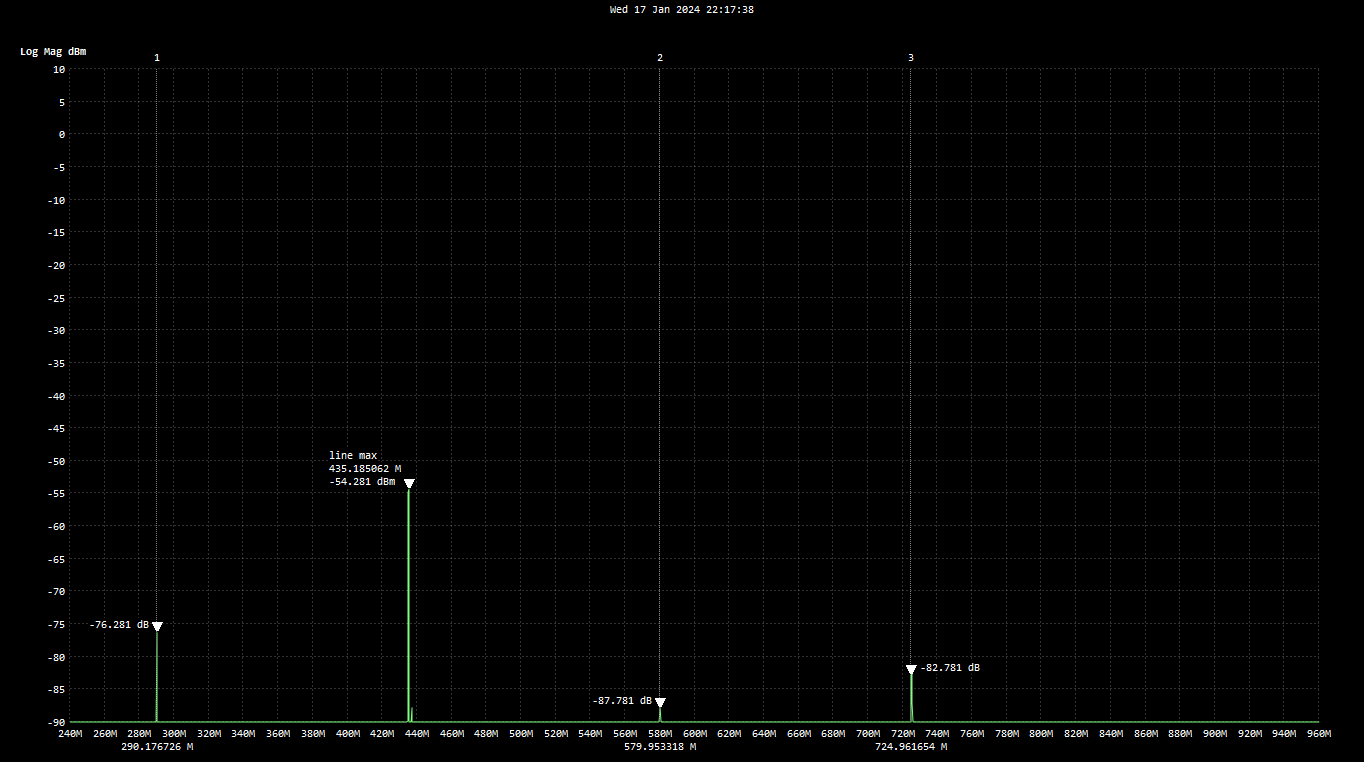I'm still fascinated by these little Quansheng UV-K5(8) radios that I got recently, and have reached the conclusion that they are fantastic for what they are, which is... a £15 radio.
The obvious benchmark for comparison is the trusty Baofeng UV-5R, which is notorious for its spurious emissions.
So let's compare one to a UV5R. Below are some measurements taken with my TinySA, a cheap 10dB directional coupler, and some attenuators. The TinySA only goes up to 960MHz, so I measured at 145MHz and noted the power at the 2nd to 5th harmonics.
Measurement
The TinySA has a LOW and HIGH input, which cover 0-350MHz and 240-960MHz respectively. Everything above the 2nd harmonic is in the higher range, so I measured the fundamental and 2nd harmonic in the LOW range, switched to the high range and the harmonics up to 725MHz.
Since I took measurements of the 2nd harmonic in both ranges, I can offset the upper harmonics by the difference between the 2nd harmonic measurement in both ranges to correct for each input's different characteristics.
Each set of measurements was taken for a Quansheng UV K5(8), a Baofeng UV-5R, and a Retevis RT-3S.
Data

| Quansheng | Baofeng | Retevis | |
|---|---|---|---|
| 2nd Harmonic (290MHz) | -45dBc | -39dBc | -57dBc |
| 3rd Harmonic (435MHz) | -23dBc | -27dBc | -25dBc |
| 4th Harmonic (580MHz) | -57dBc | -43dBc | -56dBc |
| 5th Harmonic (725MHz) | -52dBc | -50dBc | -57dBc |
| Plots | low / high | low / high | low / high |
Ofcom's amateur terms state that not more than 1% of the mean emission power should be emitted outside of the nominal modulated carrier bandwidth, so the figure we are looking for is less than -20dBc.
Conclusion
The Quansheng is in spec, appearing to perform mostly better than the Baofeng, and not quite as well as the slightly more expensive Retevis.